There is a lot of nutritional value in the mighty vegetable, otherwise known as broccoli. So, what are some broccoli nutrition, health, and beauty benefits? This cruciferous vegetable helps support the detoxification pathways in the body. Ready to get all the nutrition facts about broccoli? Let's dive right in.
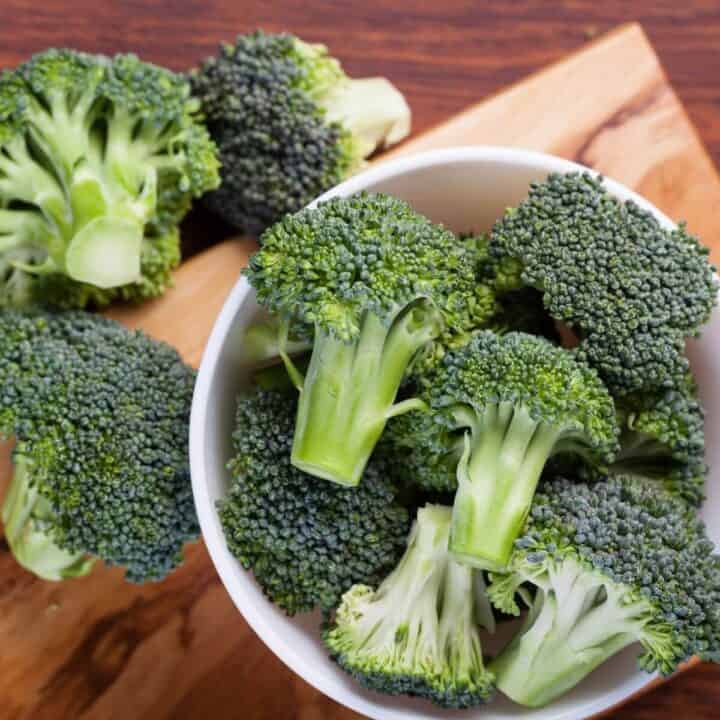
Table of Contents
🥦 Broccoli Nutrition Facts - Benefits For Your Health
There are so many wonderful benefits that broccoli gives our bodies. Broccoli is a powerhouse of health, offering a wide range of beauty and nutrition benefits that can transform your well-being.
Packed with essential vitamins and minerals, such as Vitamin C, Vitamin K, iron, and fiber, this green vegetable plays a crucial role in boosting the immune system, promoting bone health, and aiding digestion.
Additionally, broccoli is rich in antioxidants, which help fight free radicals and reduce inflammation, contributing to healthier skin and a brighter complexion. Ready to learn all about broccoli?
⁉️ What is Broccoli?
Broccoli is considered part of the cruciferous vegetable family. Cruciferous vegetables help support detoxification in the body. Broccoli is a nutrient-dense food, meaning it is packed with vitamins, minerals and other nutrients, but low in calories.
You can also find broccoli rabe, also known as rapini. However, unlike broccoli florets, broccoli rabe is closely related to the turnip family.
🩺 Nutrition, Health And Beauty Benefits Of Broccoli
Broccoli is a good source of vitamins A, C and K, as well as folate, and dietary fiber. These nutrients are important for maintaining bone health, preventing heart disease, and reducing the risk of some cancers. also contains minerals such as potassium and magnesium.
Broccoli contains phytochemicals, such as sulforaphane, which has been shown to have cancer-preventing properties.
Beauty Benefits of Broccoli
In addition, broccoli has so many amazing beauty benefits. Broccoli contains a phytochemical sulforaphane, which helps prevent stress-related inflammation in the body.
It is an amazing source of collagen-building, wrinkle-preventing vitamin C. Vitamin K is great for preventing dark circles and varicose veins. Also, the folate in the broccoli helps with brittle hair.
Health Benefits of Broccoli
Broccoli is low in calories but high in fiber, which can help you lose weight or maintain a healthy weight. There are many health benefits associated with eating broccoli. The high fiber content also supports weight management by keeping you full for longer periods.
Regular consumption of broccoli can enhance heart health, lower cholesterol levels, and even reduce the risk of certain cancers, making it a valuable addition to a balanced diet.
There is no reason to fear this veggie, as so many of us have been taught as a child.
⁉️ What are the Key Health Benefits of Broccoli?
Broccoli is a nutritious vegetable that can help with weight loss. It's high in fiber and low in calories, plus it contains glucosinolates, which support healthy cholesterol.
⁉️ Can Broccoli Reduce Cancer Risk?
These include reducing the risk of heart disease, stroke, and some types of cancer (such as ovarian and colorectal cancer). Broccoli may also help improve bone health and reduce the symptoms of arthritis.
🦠 Broccoli and Gut Health
Broccoli and gut health are closely linked due to the high fiber content and the presence of beneficial compounds, such as sulforaphane. Broccoli contains a compound called sulforaphane that can help maintain healthy gut bacteria and support the immune system.
This cruciferous vegetable not only aids digestion, but also promotes a healthy gut microbiome by serving as a food source for good bacteria.
Furthermore, the antioxidants found in broccoli can help reduce inflammation in the digestive tract, contributing to overall gastrointestinal health. Including broccoli in your diet may also enhance the gut's ability to absorb nutrients more efficiently, further supporting your immune system and overall well-being.
Additionally, the fiber in broccoli can promote regularity and feed healthy gut bacteria. Broccoli and gut health are linked.
☹️ Digestive Upset, Bloating, Gas From Raw Broccoli Florets
Digestive Issues - Broccoli is a high-fiber food, which can cause gas and bloating in some people.
📥 GET THIS RECIPE IN YOUR INBOX 📥
If you're not used to eating a lot of fiber, start slowly with broccoli and other high-fiber foods to avoid digestive issues. This is true with most vegetables. The key is to start slow and increase your fiber intake gradually over a few weeks.
🥦 Broccoli Nutrition Facts
So, here is the nutritional value and facts for the tasty vegetable, broccoli.
Broccoli Key Nutrients
Fiber | Vitamin C | Vitamin K | Vitamin B6 | Folate | Sulforaphane | Antioxidants
Nutritional Value Report of Broccoli
If you are here solely for the broccoli nutritional value, here it is.
The nutritional breakdown report of broccoli. So, let's get on to those nutrition facts of broccoli.
*Per 1 cup of raw broccoli.
- 31 Calories
- Fiber | 2 grams
- Carbohydrates | 7 grams
- Protein | 3 grams
- Vitamin C | 135% DV
- Vitamin K | 116% DV
- Potassium | 8% DV
- Iron | 5% DV
- Vitamin B6 | 6% DV
- Calcium | 5% DV
- Vitamin A | 11% DV
- Vitamin E | 4% DV
- Folate | 14% DV
- Magnesium | 5% DV
- Phosphorus | 6% DV
- Manganese | 10% DV
🥗 Broccoli Eating Suggestions to Include Into Your Diet
Try to include cruciferous vegetables into the diet at least 2-3 times a week.
Try one of my delicious recipes with broccoli, such as creamy broccoli gratin. This is a delicious side dish for the holidays. I often hear clients tell me they hate broccoli, but the truth is they haven't had it prepared in the correct way.
If you flavor and cook it well, you might learn to love broccoli as much as I do.
You might also enjoy having some broccoli for breakfast. So, try my mini gluten-free, crustless broccoli quiche bites.
⁉️ How Should You Cook Broccoli?
Broccoli is best either raw or lightly steamed to retain as many nutrients as possible.
Research shows that glucosinolates actually increase after lightly steaming. A quick steaming method, with a splash of lemon juice and olive oil, tastes great.
Roasted broccoli is another delicious way to try eating this super food vegetable. Add broccoli to your stir fry.
Try my healthy and easy sesame garlic beef with broccoli recipe. You can even make a healthy broccoli slaw.
Top your pizza with broccoli instead of pepperoni. You can even make a broccoli pizza crust.
Sauté it and serve it as a side dish. You can also eat it raw in a salad. It's tasty enough to be eaten raw, and it's good for you no matter how you prepare it.
⁉️ How Do I Cook Broccoli Rabe?
There are many ways to cook broccoli rabe but because it has a tough stem and delicate leave, it can be tricky - cook long enough to make stems tender, and you're left with mushy tops. Here is the solution.
- FIll the bottom of a large soup pot with about 3 inches of water.
- Rinse and trim just a bit off the bottom stems.
- Holding the broccoli rabe like a bunch of flowers, place stem-side down in the water, packing the pot with enough broccoli rabe that it is all standing up.
- Cover, bring to a boil and steam for about 5 minutes until stems are tender and tops are bright green.
- Immediate rinse in cold water and set in a colander to drain. Squeeze to remove as mush water as possible, and chop.
A quick and easy go to recipe is for you to try my simple side dish recipe of sauteed broccoli rabe with garlic. You might also enjoy my healthy, creamy broccoli Au gratin or crustless broccoli quiche bites.
🗣️ Let's Discuss The Health Benefits Of Broccoli!
Now that you have learned about the health, nutrition, and beauty benefits of broccoli, tell me what your favorite broccoli recipe is. Let me know in the comments below. Have you tried my creamy broccoli gratin recipe?
You can also connect with me @EatYourNutrition on Instagram. I love seeing your photos. #EatYourNutrition #LauraVillanueva



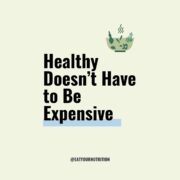





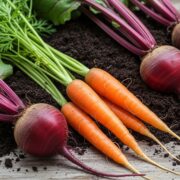
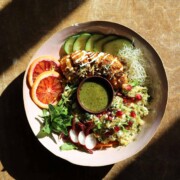
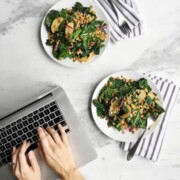


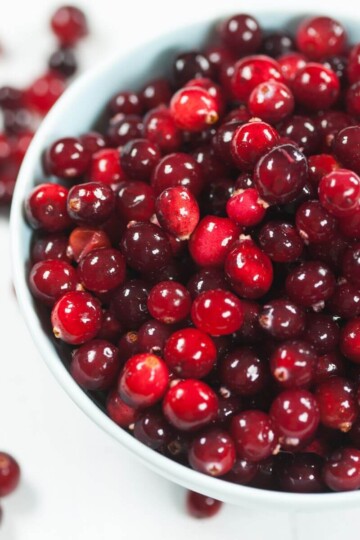

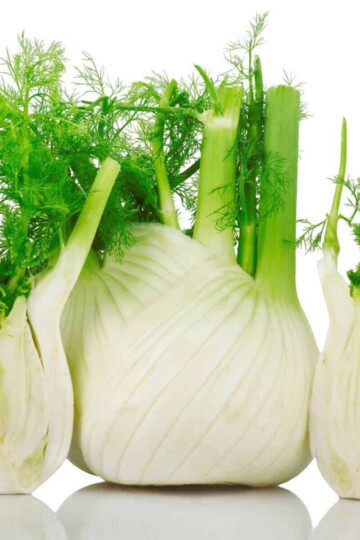
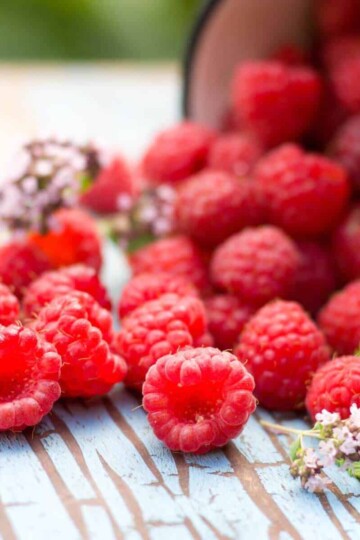
Comments
No Comments